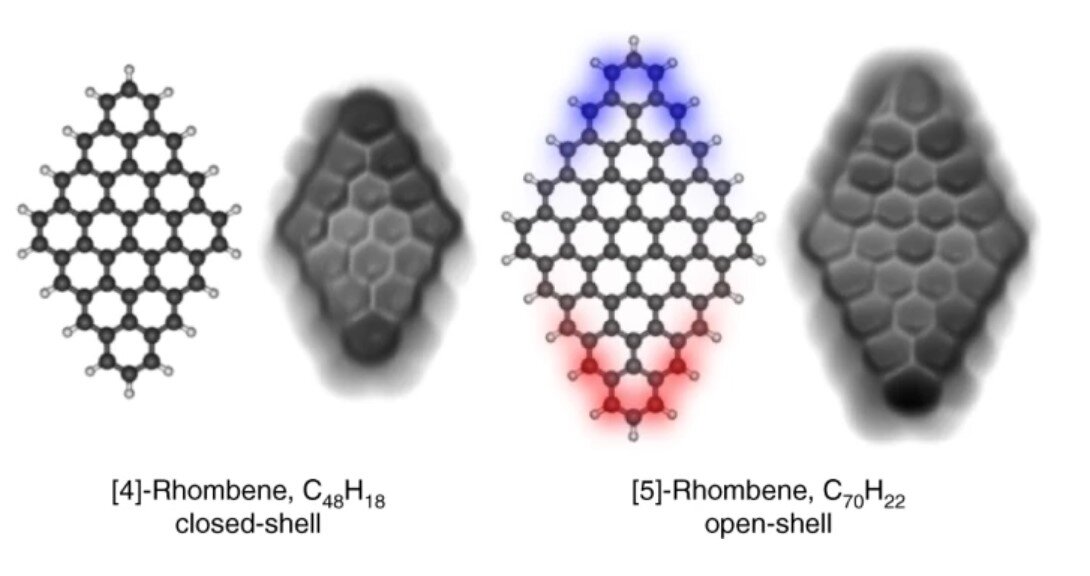Nature Chemistry highlights research on Nanographenes
The scientific paper "Large Magnetic exchange coupling in rhombus-shaped nanographene with zigzag periphery" was published on the 10th of May in Nature Chemistry, counting on the participation of Joaquín Rossier, Group Leader of the INL Theory of Quantum Nanostructures Research Group.
According to the abstract of the article, “Nanographenes with zigzag edges are predicted to manifest non-trivial π-magnetism resulting from the interplay of concurrent electronic effects, such as hybridization of localized frontier states and Coulomb repulsion between valence electrons. This provides a chemically tunable platform to explore quantum magnetism at the nanoscale and opens avenues towards organic spintronics”.
Joaquín Rossier explains that this research “shows how local spin moments emerge in sufficiently large rhombus-shaped nanographene. We found a pretty large intramolecular exchange interaction, exceeding 100 meV, which is quite remarkable for spins hosted by molecular orbitals”, adding that “the collaboration between an organic chemist, surface scientists and theorist was essential to unveil the electronic properties of these amazingly beautiful molecules”.
This paper had also the contributions of researchers from EMPA – Swiss Federal Laboratory for Materials Science and Technology (Switzerland), University of Alicante (Spain), Max Planck Institute for Polymer Research (Germany), and the Okinawa Institute of Science and Technology (Japan).

